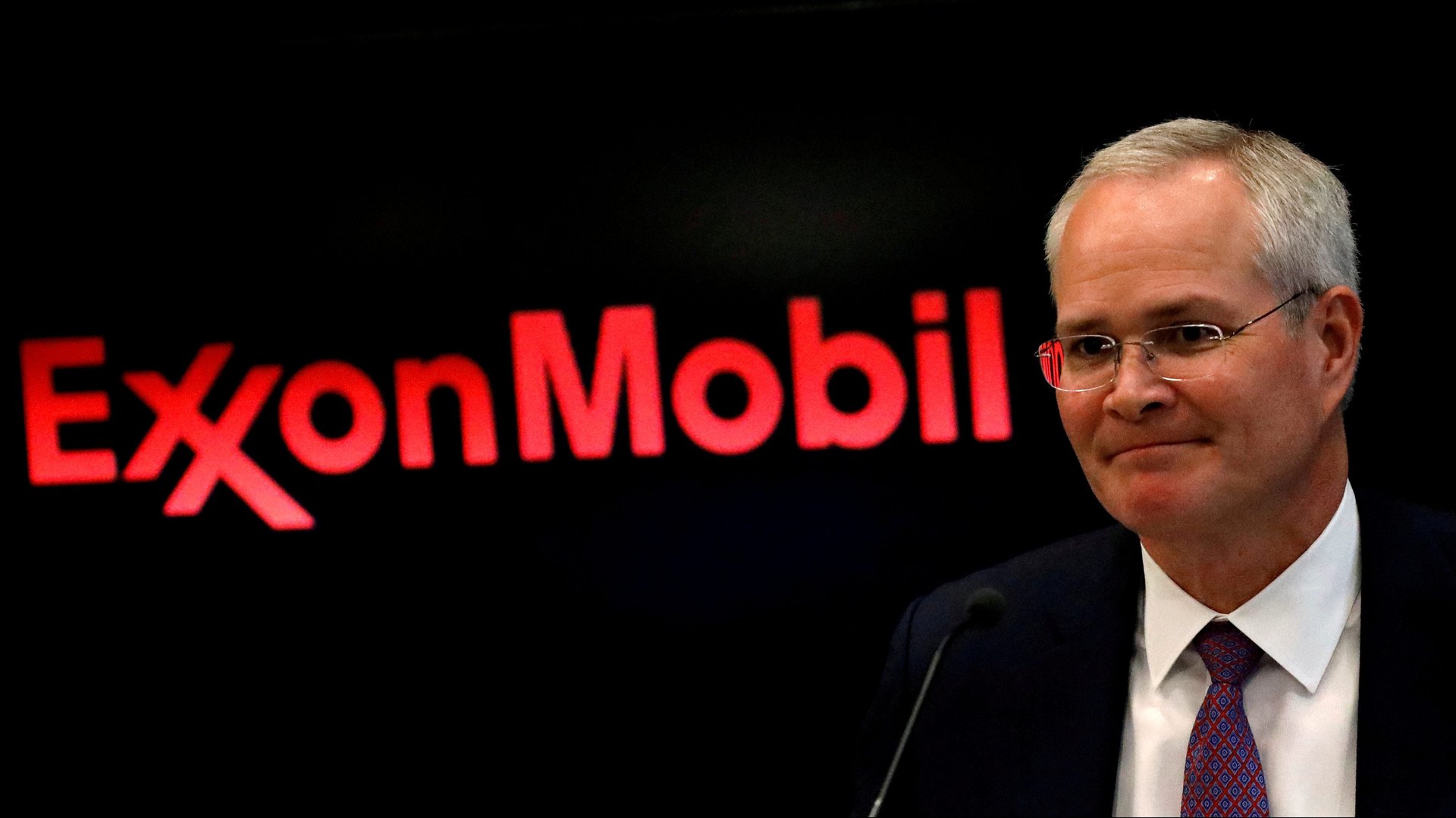Exxon’s new climate initiative is too little, too late
ExxonMobil posted a fourth-quarter loss of $20.1 billion on Feb. 2—its fourth consecutive quarter in the red—after writing down $19 billion in “less strategic” oil-producing assets. In that, the company joins other US and European oil outfits, which wrote down a collective $145 billion in the first three quarters of 2020 due to the pandemic and concerns about climate change.


ExxonMobil posted a fourth-quarter loss of $20.1 billion on Feb. 2—its fourth consecutive quarter in the red—after writing down $19 billion in “less strategic” oil-producing assets. In that, the company joins other US and European oil outfits, which wrote down a collective $145 billion in the first three quarters of 2020 due to the pandemic and concerns about climate change.
Exxon also made a surprise promise on Tuesday: to invest $3 billion in carbon capture technology by 2025, through a newly-minted subsidiary venture called ExxonMobil Low Carbon Solutions. Don’t get too excited, though—Exxon is still no champion for climate action.
Carbon capture and sequestration (CCS) systems, which aim to capture emissions from factories, power plants, and other sources and bury them underground, are popular with many oil companies these days, because they could make it possible for the world to continue burning fossil fuels with less damage to the climate. Ironically, most CCS plants rely on a business model that involves selling the captured CO2 back to oil companies, which can use it for drilling.
Most climate economists agree that some CCS will be needed to bend the curve of global emissions fast enough to avert climate catastrophe—but it will only work if oil companies simultaneously invest in renewables and cut their emissions. Exxon’s announcement doesn’t do much to finesse that balance. Most of the specific carbon-capture projects it cited aren’t actually new; and while $3 billion may seem like a lot, it’s only a small portion of Exxon’s $100-125 billion in overall spending by 2025.
“This investment is a drop in the bucket for Exxon and leaves the vast majority of their investments as carbon-intensive business-as-usual,” says Giana Amador, policy director at Carbon180, a carbon removal removal advocacy group that supports CCS in some contexts.
The rest of Exxon’s spending will still go toward oil and gas-related operations. In its earnings report, for example, the company highlights a $9 billion offshore drilling project in Guyana, and points out that in spite of the pandemic, oil and gas production in Texas and New Mexico rose 42% compared to the fourth quarter of 2019. Meanwhile, unlike many of its European peers, Exxon still hasn’t set any target date for total net decarbonization.
“The mismatch in ambition between what Exxon is doing and what is needed is massive,” says Andrew Logan, senior director for oil and gas at the sustainable investment advocacy group Ceres.
The pandemic’s impact on oil demand also hit earnings from Chevron, BP, and other oil companies, but Exxon is under increasing pressure from shareholders to articulate a convincing plan to turn a profit in a carbon-constrained world. The company is in talks with two different activist investor groups about replacing some members of its board of directors.
“To satisfy stakeholder demands and protect competitiveness, ExxonMobil will need to dig far deeper than today’s announcements,” says Ben Ratner, who directs the EDF+Business Energy Transition program at the Environmental Defense Fund. “It’s time for ExxonMobil to go all-in on slashing emissions from the energy system we have, while constructively participating in the transition to the system that we need.”
If Exxon really wants to impress the climate crowd, it should heed BlackRock CEO Larry Fink’s recent admonition to all companies to set a target for net zero emissions. By definition, Logan says, a net zero target would necessitate a much deeper investment in CCS, as well as other technologies, than the piecemeal approach the company is taking now.
“That sort of integrated effort would look like real ambition, and make it clear that this investment was part of a strategic pivot,” Logan says, “rather than an attempt to get activists off the company’s back.”